
Android tablets and iPad are often seen as a multimedia consumption devices but when it comes to work, these devices don’t cut in for businesses. Sure, Apple and Google have been adding new features to the OS to make it more business friendly but businesses haven’t adopted it wholeheartedly as majority of them are powered by Windows OS.
Dell is also trying to woo the business-centric crowd with the Latitude 10 and apart from its size and portability, it runs a full-fledged version of Windows. But is it worth it? We take a deeper look.
Design:

Dell’s target market with the Latitude 10 is business, which is why it has been designed keeping them in mind. The front side of the tablet is graced by a glossy 10.1-inch screen along with Windows ‘Start’ key at the bottom and a 2MP camera on the top. However, the sides and the back are a complete contrast to the glossy front. The back has a rubberised finish, giving it the much needed grip when placed on any surface.


The keys and port placements include Power and display orientation buttons along with SD card slot at the top, volume +/- buttons on the left, Dell’s proprietary charging and docking port and microUSB port at the bottom and microHDMI, full size USB port and 3.5mm headphone jack at the right-hand side. The back hosts an 8MP camera and a removable battery, which could be termed as one of the biggest highlights of the tablet.

Overall, Latitude 10’s design may not be as aesthetically pleasing as the iPad but it certainly gives an impression of a solidly built device, which is probably more important for businesses.


Display:

Latitude 10 features a 10.1-inch display supporting a resolution of 1366×768 pixels. Now it isn’t as ‘resolutionary’ as the latest iPad or the Nexus 10 but the resolution is at par with the majority of the tablets in the market. The screen’s legibility is quite good under sun and is bright as well when the display is at full brightness. But things go downhill, when the display brightness is cranked to the minimum. The display goes completely dark when the brightness is set at the lowest level. Add to the fact that there is no physical button to control the brightness and the only way to change the display brightness again is using the touchscreen, makes the job difficult.
Another issue I found was again with the display’s automatic brightness. If you allow the tablet to control the brightness, which uses the tablet’s sensor, it will lower the brightness to the minimum (as good as a turned off display) when you try to use in a room without lights. You’ll have to override automatic brightness control setting if you want to use the tablet in a dark room.
This issue seems to be software-related, so I’m optimistic that it would be addressed in the near future.
The display is also fitted with a Wacom digitizer, which means you can use a Wacom stylus for drawing or taking notes. The Wacom stylus is an optional accessory that has to be bought separately.
Software:
Latitude 10 is powered by Microsoft’s latest Windows 8 OS and for the uninitiated, the OS is a completely new experience – until you fire up the Desktop mode. The tablet boots up in Windows’ Modern UI, which is a tile-based user interface that is optimised for touch-based devices. If you haven’t used the Modern UI before, there’s definitely some learning to be done but frankly, it’s not that difficult. Modern UI houses a dedicated Microsoft Store for apps and games, Internet Explorer 10 and other apps like Music, Video, Camera, GPS, Skype etc.
But all said and done, if you feel Modern UI is not your cup of tea, you can switch to Desktop mode that brings the ubiquitous interface of Windows we’ve known all these years. Understandably, switching to Desktop mode also changes some functionality compared to the Modern UI. For instance, the keyboard in the Desktop mode does not pop-up immediately opposed to Modern UI that pops up as soon as you click on a text field.
Hardware:
Under the hood, Latitude 10’s features Intel’s dual-core Atom processor Z2760 along with 2GB of RAM, integrated Intel graphics and 64GB of SSD storage. Optional hardware includes larger 128GB SSD storage option, 3G SIM card slot and a larger 4-cell 60Whr battery. The inclusion of a full size USB port is a welcome addition but it would have been even better if Dell had decided to integrate another USB port as well.
Rounding up the hardware set is an SD card reader and mHDMI that effortlessly allows to connect the tablet to a bigger screen.
Performance:
So how well does this perform? I would say well enough for most tasks but given its CPU and RAM, don’t expect it to do resource intensive tasks. The tablet handled Google Chrome with more than 15 tabs and Photoshop CS2 running simultaneously without showing any signs of slowing down. 720p and 1080p videos fared pretty well and was able to play most file formats out of the box in Modern UI Video app player.
The tablet features two cameras – an 8MP at the back and 2MP on the front. Both the cameras produces decent pictures and supports HD video.

On the battery front, the tablet does not disappoint at all. The standard 2-cell battery can easily give about 7-8 hours of runtime before you’ll have to plug in the charger again. Making the battery removable is an advantage as well. A user can invest in another battery and he can extract about 7 hours on a 2-cell or double on a 4-cell battery. This Latitude 10 SKU also integrates a microUSB besides Dell’s proprietary port that also allows charging the tablet. However, I tried charging the tablet with couple of different microUSB chargers with different out capacities and none was able to charge. They could only ensure the tablet was running on AC power and not drain anymore battery.
Conclusion:
I think one question that needs to be asked is whether you need a tablet for media consumption, light web surfing and games or you need all of that plus a full-fledged OS? If you answered with the former, look elsewhere as there are many tablets to fulfill the criteria but if it is the latter you want, Latitude 10 is a good option. Sure, you’d get a decently powered Windows 8 notebook at a similar price but then you would lose the mobility Latitude 10 offers.
Dell sells Latitude 10 in plenty of variants and the base model starts from Rs. 35,000.
Rating: 
Pros: Battery Life
Cons: Display
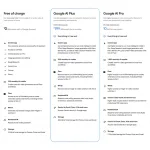
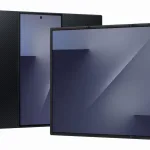
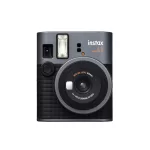
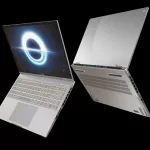
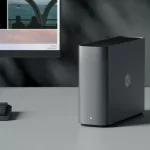
Pls, where is the sim or micro sim card slot.. An how to insert sim
The sim card slot is located beneath the removable battery.
how can I delete some photos on the main screen? Even I erased some photos in the pictures library, it shows my all pictures that I took.